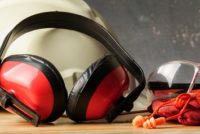Category: Special Topics in Safety Management
Safety is a process, and as such, needs to be managed. This section offers resources to create a viable safety program, sell it to senior management, train supervisors and employees in using it, and then track and report your progress. Look also for ways to advance your own skills in these areas, both for your current job, and those that follow.
The California Division of Occupational Safety and Health (Cal/OSHA) has issued additional employer guidance related to the COVID-19 pandemic. Cal/OSHA released interim guidelines for long-term care and skilled nursing facilities and agricultural employers.
Personal protective equipment (PPE) is the last line of defense against hazards, and it has the potential to prevent injuries and save lives. But safety glasses can’t work when they’re perched on an employee’s forehead; a hard hat is useless if left sitting on the breakroom table; and what is the point of safety gloves […]
Cher probably says it best: “If I could turn back time…” In the case of workplace incidents, we’d all like to turn back time. We’d like to turn it back to the time before the incident occurred; before someone was injured, before property was damaged, before a spill occurred. What are known as lagging indicators […]
The Occupational Safety and Health Administration (OSHA) suggested that employers consider using filtering facepiece respirators certified under other countries’ standards in light of shortages of N95 respirators. The agency issued interim enforcement guidance to regional administrators and state-run occupational safety and health programs temporarily permitting their use.
Facial hair prevents employees from effectively wearing tight-fitting respirators. Experts at Safety.BLR.com® were recently asked who bears the responsibility for paying for alternate options, such as a Powered Air-Purifying Respirator (PAPR). There are both safety and human resources considerations—read on to see the answer.
This article was last updated and reposted on July 20 in accordance with more up-to-date guidance and links to additional resources. The world has changed in an unprecedented way since the onset of the COVID-19 pandemic, and employers have a lot of questions for our experts at Safety.BLR.com®. Read on to see how experts answered […]
The California Division of Occupational Safety and Health (Cal/OSHA) issued interim guidance requiring healthcare facilities to provide surgical masks during the COVID-19 pandemic when respirators are not available. The California Aerosol Transmissible Diseases (ATD) standard requires the use of respiratory protection for workers exposed to airborne infectious diseases.
Nevada state safety and health officials reminded construction firms in the state to follow social distancing practices to prevent COVID-19 infections. The Nevada Occupational Safety and Health Administration sent letters to employers because the agency found workers at job sites allowed or instructed to work in close proximity.
The following is adapted from Rethinking Hand Safety. Some years ago, I was working with a major aerospace company, helping it pick out the right gloves for some of its manufacturing workers. We had done trials and convinced the line managers to go from a general-purpose glove to a cut-resistant glove. We had lots of […]
Safety committee members are there for their organizations, employees, and each other. So, do you need a safety committee? Depending on your company size and location, the hazards present in your facility, or past workers’ compensation claims, you may be required to have one. Safety committees also may be required if you have a collective […]










